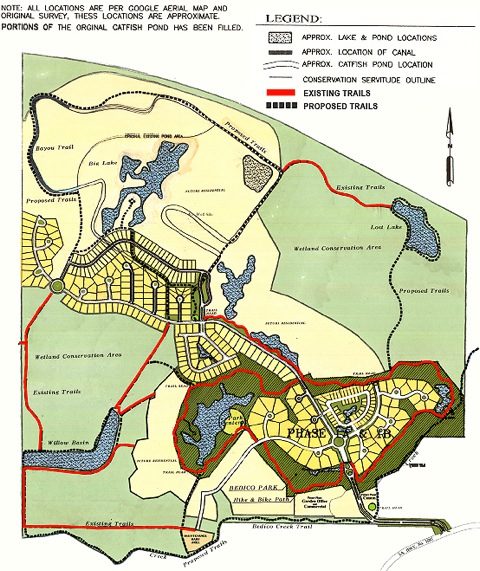Stockton, California, has the highest U.S. foreclosure rate. It also has a housing shortage.
The number of homes for sale in the city fell 42 percent in October from a year earlier. Listings routinely attract multiple offers. Prices are on the rise.
When banks pulled back on foreclosures two years ago following a government investigation into allegations of faulty practices, market researchers, academics and Wall Street analysts said that a surge of delinquent homes would deluge the U.S. market once lenders resolved the claims and worked through backlog, driving down prices for years to come. RealtyTrac Inc., a seller of property data, warned a year ago of a “new set of incoming foreclosure waves.” Susan Wachter, professor at the University of Pennsylvania’s Wharton School, said in February that a logjam may be “unleashed” and destabilize the market.
In fact, the flood failed to materialize, even after the five biggest U.S. mortgage servicers reached a $25 billion settlement with federal and state regulators in February. Instead, the number of properties for sale shrank to the fewest in a decade, prices appreciated at the fastest pace since 2005, and the gradual healing of the housing market helped boost consumer confidence and the economy.
“We don’t have enough homes now to meet the needs of the market,” Paul Jacobson, a Stockton native and real estate broker for 22 years, said as he cruised the city’s northern fringe, where suburbia meets farmland. “People see a foreclosed home for sale in this area and they’re going to jump on it.”
Bank Deals
Banks have stepped up foreclosure alternatives to avoid legal challenges. They’re forgiving debt, modifying payment plans and approving short sales that allow homeowners to sell for less than they owe.
The federal government, criticized by consumer activists for failing to prevent more than 4.7 million homes from being lost to foreclosure or short sales since President Barack Obama took office in January 2009, is also helping to stem the crisis. Expanded loan-modification programs have gained traction, and the Federal Reserve has kept bank interest rates near zero. Investors including Blackstone Group LP (BX) and Colony Capital LLC are purchasing thousands of foreclosed homes in bulk before they even hit the market, further limiting new supply.
With the unemployment rate also coming down, concerns are fading that a deluge in foreclosures will destabilize the housing market as it recovers from a six-year slump.
‘Wrong’
“Many of us, myself included, feared a wave of foreclosures when the settlement came,” Wachter, professor of real estate and finance at Wharton in Philadelphia, said in a telephone interview. “I was wrong.”
Slowing the foreclosure process has allowed banks to avoid booking losses on non-performing loans, said Joshua Rosner, an analyst with Graham Fisher & Co. in New York. U.S. banks reduced their net charge-off rate on mortgages to 0.77 percent in the second quarter, the most recent available, from a high of 1.81 percent at the end of 2009, according to data Rosner compiled. That drop occurred as the rate of non-current loans declined to 9.77 percent from 10.15 percent in late 2009.
“The goal all along — from the banks, the servicers and the government — was sort of to slow walk the whole thing, bleed it through over time,” Rosner said in a telephone interview.
Prices Rise
The strategy may be paying off. Home prices in 20 U.S. cities rose 3 percent in September from a year earlier, the most since 2010, the S&P/Case-Shiller index showed this week.
An index of pending home resales climbed 5.2 percent in October, exceeding the highest estimate in a Bloomberg survey of economists, figures from the National Association of Realtors showed today in Washington. The median price of an existing home sold last month jumped 11 percent from a year earlier to $178,600, the steepest annual increase since November 2005, according to the group. The number of previously owned homes on the market in October fell 1.4 percent to 2.14 million, the fewest since December 2002.
The Federal Reserve Bank of New York estimated that as many as 1.8 million properties would be taken back by banks in 2012, according to a January speech by President William Dudley. Through October, there have been about 559,000 home seizures, indicating a pace of about 650,000 for the year, according to Daren Blomquist, vice president of RealtyTrac.
The so-called shadow inventory of pending foreclosures, which may be larger than the visible supply of previously owned homes for sale, is shrinking as new defaults decline and banks work through their backlog of bad loans. Home loans that were more than 90 days late or in the foreclosure process, a proxy for the shadow inventory, fell to 7.03 percent of properties with a mortgage in the third quarter, the lowest share since 2008, the Mortgage Bankers Association said two weeks ago.
Managed Process
While lenders may bring more distressed properties to market over the next year, it won’t be enough to depress values, said Vishwanath Tirupattur, housing strategist at Morgan Stanley in New York.
“I don’t anticipate a flood that will take the market down with it,” he said in a telephone interview. “It will be a much more managed process.”
The shadow inventory — which also includes properties owned by banks but not for sale — fell from an estimated 8.8 million homes in 2010 to 5.36 million as of this month, a faster decline than expected as fewer loan modifications re-defaulted, according to Tirupattur.
Changes to Obama’s loan-modification program had the biggest impact on reducing pending foreclosures since late 2010 by creating a template that lenders followed, Wachter said. That included incentives to compensate loan servicers for reducing principal on loans for delinquent borrowers. In January, the administration tripled the award to 63 cents for every $1 in writedowns.
‘Transformative Steps’
“The loan modifications were successful in this new wave,” she said. “Transformative steps were being put into place in the loan modification process. I underestimated how transformative those reforms would be.”
An estimated 1 million homeowners qualify for payment-plan changes with principal reductions under Obama’s guidelines, according to Wachter. Assuming a redefault rate of 25 percent, that would result in almost 750,000 sustainable modifications, Wachter wrote with Mark Zandi, Celia Chen and Cristian deRitis of Moody’s Analytics Inc. in a report published in May.
“Along with those that would take place in any event, this is about the number needed to forestall any further house-price declines,” they said.
Principal Forgiveness
Since the February settlement, the five largest U.S. mortgage servicers provided loan relief to 309,385 borrowers, including trial plans, according to a Nov. 19 report by Joseph Smith, monitor of the deal. Almost 22,000 borrowers had principal forgiveness totaling $2.55 billion. The companies, which include Bank of America Corp. (BAC) and JPMorgan Chase & Co. (JPM), agreed to short sales for 113,000 borrowers for another $13.1 billion in principal write downs, Smith’s report said.
The settlement helped stabilize prices, in part, by encouraging alternatives to foreclosures, including principal forgiveness and short sales, said Nela Richardson, senior economic analyst with Bloomberg Government. Modified loans have a high default rate and may eventually show up as foreclosures or short sales, she said.
“In this sense, I think the shadow inventory is still looming but it does not look like it will come out of the shadows all at once,” Richardson said in an e-mail. “Rather, properties will trickle out into the market.”
About 940,000 modifications will be completed this year, including 100,000 resulting from the $25 billion mortgage settlement, according to a Nov. 21 report by JPMorgan analysts led by John Sim. The pace will fall next year to about 530,000 as the pool of eligible borrowers shrinks.
Short Sales
Short sales made up 9.3 percent of transactions in September, up from 7.8 percent a year earlier and 5.8 percent in September 2009, according to CoreLogic Inc., an Irvine, California-based real estate data firm.
“The best, lasting legacy of the crisis is that the industry has created a more nuanced approach to loss disposition,” said Mark Fleming, chief economist of CoreLogic. “I don’t think the idea of evaluating a delinquent borrower for all different alternatives goes away after we’ve dealt with the shadow inventory. I think that’s here to stay.”
In Stockton, about 80 miles (129 kilometers) east of San Francisco by car, the foreclosure crisis is easing after a plunge in home values that has left prices down 60 percent from a 2006 peak. The city earlier this year became the largest in the U.S. to file for bankruptcy protection from creditors after the collapse of the housing market left it with mounting retiree health-care costs for employees and an eroding tax base amid accounting errors that overstated municipal revenues.
Highest Rate
One in 67 of Stockton’s households received a foreclosure filing in the third quarter, the highest rate of any U.S. metropolitan area with a population of more than 200,000, according to RealtyTrac. The number of filings of default, auction or repossession fell 21 percent from a year earlier.
William Hoeurn, a teacher’s assistant in Stockton, last month won a $337,906 principal reduction on his mortgage from Bank of America, reducing monthly payments on his three-bedroom house to $884 from $2,362. Hoeurn fell behind on his loan payments after his wife lost her job and two of his grown children, who helped pay the mortgage, moved out of the home.
“Before, I was having bad dreams that I am losing my house,” Hoeurn, 66, a refugee from Cambodia, said during an interview in his kitchen. “Now, I feel very happy.”
Short Sales
The number of bank-owned homes listed for sale in Stockton plunged 72 percent in September from a year earlier, according to MetroList Services Inc., a Sacramento, California-based listing information service. Short sale listings fell 63 percent to 155 homes.
Re-sale prices rose 14.6 percent in the 12 months through October to $179,570 in San Joaquin County, where Stockton is the county seat, according to the California Association of Realtors.
Peter Lemos, code enforcement field manager for Stockton’s police department, said he suspects banks are delaying foreclosures to reduce the supply of houses on sale and keep prices higher.
“If they flooded the market, prices would go down,” Lemos said during an interview in his office. “So they’re getting more for what they’re selling. At the same time, it’s making more work for us.”
Painting Lawns
There were 6,650 properties with unresolved code violations as of Sept. 30, about two-thirds of which were vacant because the owners walked away and banks hadn’t foreclosed, Lemos said. His team stages night raids to oust squatters from abandoned properties. To give the appearance homes are occupied, they paint dry lawns green.
Rick Simon, a spokesman for Bank of America, and Tom Kelly, a spokesman for JPMorgan, said they aren’t keeping foreclosed properties off the market to boost prices or avoid booking losses.
“Under servicing agreements and investor guidelines, we generally are compelled to move defaulted loans through the foreclosure process and bring them to market without undue delays in order to curtail servicing costs and recover as much of the investment for the owner of the loan as possible,” Simon said in an e-mail.
Potential Foreclosures
The inventory of potential foreclosures remains a threat across the U.S. and could result in a new wave of defaults and depress home values, especially if the economy slows, said Robert Shiller, an economics professor at Yale University. Homeowners who owe more than their properties are worth are more likely to default if they lose a job, need to move for employment, or simply decide to walk away, he said.
“I’m still worried about home-price declines,” Shiller, and co-creator of the S&P/Case-Shiller home-price indexes, said in a telephone interview. “It’s funny how people have so much confidence in the recovery. History shows that these markets are hard to predict.”
Delaying the process may also be hindering a faster recovery, said Anthony B. Sanders, an economics professor at George Mason University in Fairfax, Virginia.
“The best cure for any market meltdown is to let prices fall to whatever level is needed to clear it,” he said. “Instead, we’re sitting here in 2012 and we’re still not out of the woods yet. The wisdom of delaying foreclosures etc. was more of a political act than an economic act.”
Bank Seizures
Mortgages on homes seized by banks averaged a record 708 days delinquent in September, up from 624 days a year earlier, according to Lender Processing Services Inc. (LPS) The U.S. average was 367 days in December 2008, before Obama took office and launched an alphabet soup of programs to help struggling homeowners keep their residences.
The February mortgage settlement restricted lenders from so-called “dual-tracking” — simultaneously pursuing a foreclosure while borrowers were in the process of applying for a loan modification — a limitation that prolongs the time it takes lenders to repossess a house.
“In hindsight, by delaying and prolonging the foreclosure process, that gave the market time to stabilize and get back on its feet,” said Blomquist of RealtyTrac. “Maybe bureaucracy is actually helping, in this case, to diffuse the impact of the foreclosures. Talk about unintended consequences.”
Fed Prevents
Low interest rates engineered by the Federal Reserve prevented a wave of defaults that would have been triggered by resets for borrowers with adjustable-rate mortgages, said Karen Weaver, head of market strategy and research at Seer Capital Management LP in New York.
“With very low interest rates, that’s been completely finessed,” Weaver said in a telephone interview. “That’s another reason we haven’t had the tsunami.”
An Obama program begun in February allowing refinancing for Americans with more than 125 percent negative equity also has reduced incentives for underwater homeowners to abandon their property. The higher threshold opens the door for about 5 million borrowers to refinance, according to CoreLogic.
More than 100,000 borrowers a month, most of whom have no equity in their homes, have been able to get lower interest rates through the
Home Affordable Refinance Program.
“We were originally skeptical,” Paul Ashworth, chief U.S. economist for Capital Economics Ltd., wrote in a note sent last week. “But we have to admit that it has made a significant difference.”
The foreclosure slowdown took place as the broader economy began to heal. The unemployment rate fell to 7.8 percent in September, the lowest since Obama took office.
Household Formations
Household formations increased to an annual pace of 1.15 million in the third quarter, driving down the vacancy rate for rental homes to its lowest rate since 2002, while the vacancy rate for owner-occupied properties dropped to 1.9 percent, a level last seen in 2005, according to the Census Bureau.
Homes that are seized by banks are attracting investors, many of which aim to turn them into rentals. Private-equity firms are raising as much as $8 billion to buy single-family homes, often purchasing at auctions or directly from banks before the properties are publicly listed for sale. New York- based Blackstone, the world’s biggest private-equity firm. has been buying $100 million of houses a week, Chairman Stephen Schwarzman said during an Oct. 18 earnings call.
For those foreclosed properties that do hit the market, investor purchases are rising. All-cash sales represented 29 percent of existing-home deals in October, according to the National Association of Realtors. Investors, who account for most cash sales, purchased 20 percent of homes in October, up from 18 percent the previous month and a year earlier.
Phoenix Demand
Some hot markets are seeing even more demand. In Arizona’s Maricopa County, home of Phoenix, investors accounted for a third of home purchases, including those at auctions, said Michael Orr, director of real estate research at Arizona State University’s W.P. Carey School of Business.
Investors and other homebuyers are moving east toward Stockton from the San Francisco Bay area, where the technology industry has kept property values high, said Jerry Abbott, president of Grupe Real Estate, a Stockton-based sales and development company that has acquired more than 1,000 rental homes since 2010.
“My guess is 50 percent of the active closings are investors,” Abbott said in a telephone interview. “Everybody and his uncle wants to get in at low prices.”
Click Here for the Source of the Information.



 set aglow the Koop Drive section of the Tammany Trace just north of Mandeville. There will be sparkling Christmas trees, a 160-foot tall “Tower of Lights,” as well as many other lights and displays adorning the area. Also that night, there will be rides for the youngsters, and Santa Claus will be on hand to hear the wishes of all good children.
set aglow the Koop Drive section of the Tammany Trace just north of Mandeville. There will be sparkling Christmas trees, a 160-foot tall “Tower of Lights,” as well as many other lights and displays adorning the area. Also that night, there will be rides for the youngsters, and Santa Claus will be on hand to hear the wishes of all good children.
